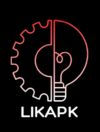In today’s hyper-connected world, every digital interaction—every click, like, share, or scroll—leaves behind a trace. This trace is often quantified in terms of carbon emissions, the environmental impact of powering the servers, networks, and devices that make up our digital infrastructure. However, what if there is another, less visible trace—one that cannot be measured in kilowatts but rather in emotions?
Welcome to the concept of the carbon shadow: a metaphorical map that explores the emotional and psychological weight of every digital interaction we make.
What Is the Carbon Shadow?
The traditional concept of a “carbon footprint” measures the amount of greenhouse gases produced by human activity. However, the idea of a carbon shadow extends beyond the physical to the psychological. It encompasses the unseen impact of our digital behavior—how the content we consume, share, and create affects our emotions, mental well-being, and interpersonal connections.
For instance:
- A seemingly innocent scroll through social media may trigger feelings of inadequacy, envy, or disconnection.
- A viral video that makes you laugh might leave a lasting feeling of joy, but it can also propagate misinformation or cause emotional exhaustion over time.
- A negative news headline shared by a friend could raise anxiety levels, spreading not only information but also fear and distress.
These digital actions don’t just ripple across data centers—they ripple through our emotional landscapes, leaving behind an invisible residue of feelings.
Mapping the Emotional Footprint
While it’s easy to measure the carbon footprint of a single action (for example, sending an email or streaming a video), measuring the emotional footprint is far more complex. However, the rise of emotion-sensing technologies and AI-driven sentiment analysis offers us a glimpse into how we might map the emotional weight of digital interactions.
Here are some ways to begin thinking about this emotional footprint:
1. Emotional Influence of Content Consumption
Every piece of content consumed—whether it’s a tweet, a blog post, or an Instagram story—has the potential to influence emotional states. Depending on the type of content, it might:
- Elevate mood (funny videos, uplifting posts)
- Trigger stress or anxiety (news about disasters or political unrest)
- Foster connection (engaging with supportive communities)
- Breed comparison (idealized lifestyles or influencer culture)
Each interaction with digital content changes our psychological environment—sometimes subtly, sometimes dramatically.
2. Social Media’s Emotional Feedback Loop
The act of sharing, liking, and commenting on social media doesn’t just produce direct emotional feedback for the user; it also influences the emotions of others. This interconnected web of emotions creates a feedback loop where one person’s joy, anger, or frustration can ripple across a vast digital network.
- A like on a photo may boost the creator’s self-esteem, but it can also reinforce superficial measures of validation.
- A viral tweet can spread fear or outrage, often magnifying negative emotional reactions and distorting perceptions of reality.
- A comment thread might foster community, but also escalate conflict or polarization.
This social feedback loop contributes to the emotional burden carried by digital users, turning the act of engaging online into something more emotionally taxing than we might realize.
3. The Exhaustion of Information Overload
The endless stream of notifications, updates, and content feeds is a source of emotional fatigue. We are constantly exposed to a deluge of information, and while it’s easy to assume that the brain can process this with ease, it’s actually a source of mental drain. The sheer volume of content we consume daily—whether important or trivial—leaves us with a collective emotional hangover.
The constant need to process and make sense of this content creates an emotional backlog, often leading to:
- Cognitive overload and decision fatigue
- Mental burnout and emotional exhaustion
- Decreased attention span and focus
How to Reduce the Emotional Carbon Shadow
While we can’t entirely escape the emotional impact of our digital behavior, we can take steps to minimize its weight. Here are some strategies:
1. Mindful Consumption
Being intentional about what we consume online can help reduce the emotional toll. This includes:
- Curating our social media feeds to follow content that aligns with our values and fosters positive emotions.
- Taking breaks from negative news or emotional topics that may contribute to stress.
- Using platforms that prioritize thoughtful engagement over instant gratification.
2. Digital Detox
Taking periodic breaks from screens allows us to reset both emotionally and mentally. These detoxes don’t just minimize the carbon footprint—they reduce the emotional carbon shadow, too.
3. Empathy-Driven Design
Developing digital tools with empathy in mind can help reduce the emotional load placed on users. This involves:
- Designing positive feedback systems that encourage healthy interactions and support.
- Minimizing algorithmic manipulation that drives engagement through anxiety or outrage.
- Ensuring that social media platforms promote meaningful interactions rather than just increasing engagement at all costs.
4. Fostering Digital Well-being
Platforms and apps that focus on digital well-being can help mitigate emotional overload. This includes:
- Notification control to minimize distractions.
- Mood tracking features that allow users to monitor how digital interactions affect their emotional state.
- Purposeful digital habits that prioritize connection and reflection over constant consumption.
Conclusion: The Hidden Cost of Connectivity
In our connected world, every click, every share, every scroll leaves behind more than just data. It leaves behind an emotional residue that can weigh heavily on our well-being. The carbon shadow of our digital lives is not just an environmental issue—it’s a deeply psychological one.
By understanding the emotional impact of our digital behavior and adopting more mindful, intentional practices, we can lighten this invisible load. In doing so, we’ll not only improve our mental well-being but also foster a more healthy, sustainable digital future for everyone.


